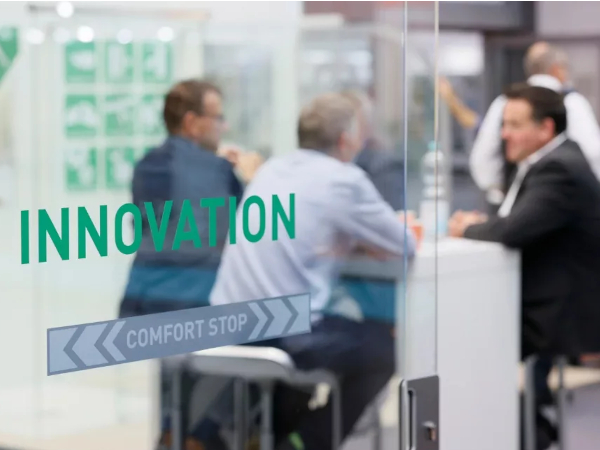Date: 22 October 2012
Researchers will demonstrate the process at the Glasstec trade fair from October 23 to 26 in Düsseldorf (Hall 15, Booth E25).
At home, in the car or with industrial processes – glass is a universal material. Its properties are so extraordinary that frequently there are no alternatives to this material. Take, for example, high-temperature fuel cells, in which layers of ceramics and metals are alternately attached to each other: to ensure no explosive hydrogen escapes, the metal and ceramic layers must be firmly bound to each other, and the seam must be sealed tight. Only glass can accomplish this type of seal – and here, we are specifically referring to solder glass. But how does glass behave at such high temperatures? To what extent does it enlarge? Until now, this question was investigated using a push rod, which pushes from the glass onto a cylinder. If the glass heats up, then it expands and pushes back against the push rod. Were the glass to become molten, however, then it adheres to the push rod and renders it unusable. Even if seeking to create glass with new qualities, scientists need reliable, efficient and simple methods in order to investigate the characteristics of the glass.
Researchers from the Fraunhofer Institute for Silicate Research ISC in Wertheim have just developed a thermooptical measuring device that makes the comprehensive characterization of glass possible. “With our system, we can study all glass characteristics simultaneously for the first time ever – and that on a laboratory scale, in other words, with minimal sample material,” says Dr. Andreas Diegeler, head of the Center of Device Development at ISC. This system consists of an oven that a CMOS camera “looks into.” This camera enables the researchers to observe the glass during the entire heating process.
The centerpiece for glass characterization is the maximum bubble pressure module, which the scientists can use to measure the viscosity and the surface tension of the glass under molten conditions. The principle behind this concept: The glass is heated in a crucible made of quartz glass. Since quartz glass has a higher melting point (about 1600 degrees Celsius) than other glass, the quartz glass crucible remains solid while the study glass slowly melts in it. A quartz glass capillary – in other words, a pipette with an inner diameter of one to three millimeters – is dipped, on a fully-automated basis, into the molten glass through a hole in the roof of the oven. A precisely defined volume of glass is likewise blown on a fully-automated basis through this pipette into the glass melt. The capillaries in the molten glass are like a drinking straw in a glass of soda: Blow air through the drinking straw into the beverage, and bubbles emerge. Do the same thing with yoghurt and you see fewer bubbles. Similarly, the researchers can determine the viscosity (flow resistance) of the glass based on the way in which the bubbles develop, and they can also establish the surface tension of the molten glass. Using the thermooptic measurement principle, they can additionally define other basic qualities of the glass, such as thermal expansion, under application-related conditions.
The process delivers a number of advantages: “On the one hand, it saves time: With the thermooptical system, glass can be characterized at least five times faster than previously. Because instead of having to produce and individually analyze five samples just to study five characteristic viscosity points of the glass, now we only need one sample, which is studied in only one heating operation. In addition, the process helps save on resources. Since we only need one sample instead of five, we spare 80 percent of the material – on a small scale, naturally,” Diegeler summarizes. However, this system delivers outstanding services for more than glass alone. It can be used for any type of melting, whether steel or slag. Another interesting alternative: For test purposes, instead of blowing a gas into the glass that does not react with glass, one can also introduce gas that generates a chemical reaction with the glass, thereby changing its characteristics. This could be an alternative way of developing entirely new types of glass.
The system is already on the market – some customers are already working with it. Researchers will demonstrate the process at the Glasstec trade fair from October 23 to 26 in Düsseldorf (Hall 15, Booth E25).







Add new comment